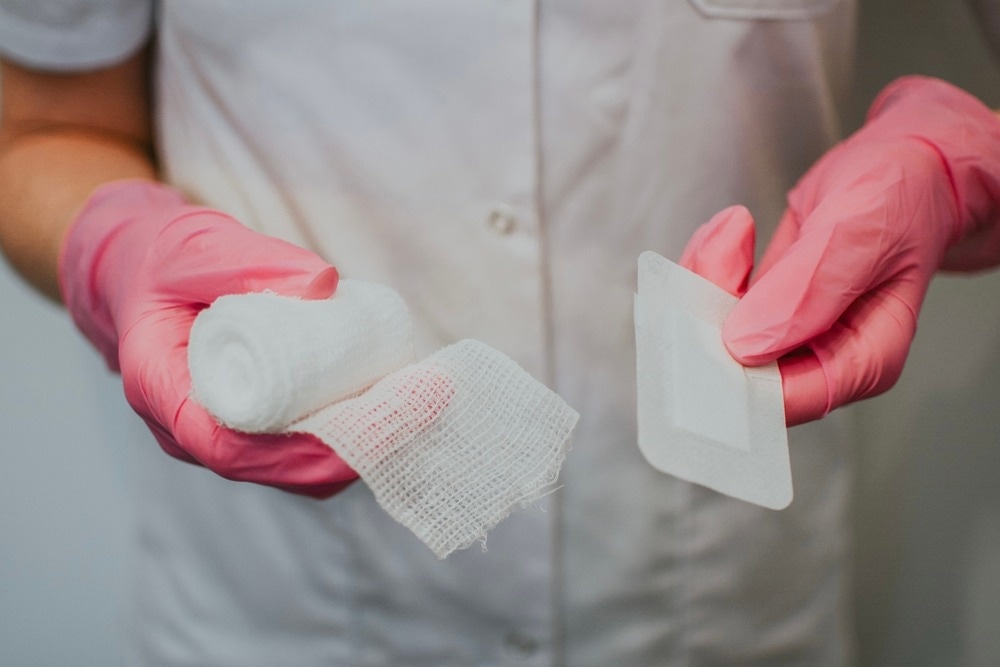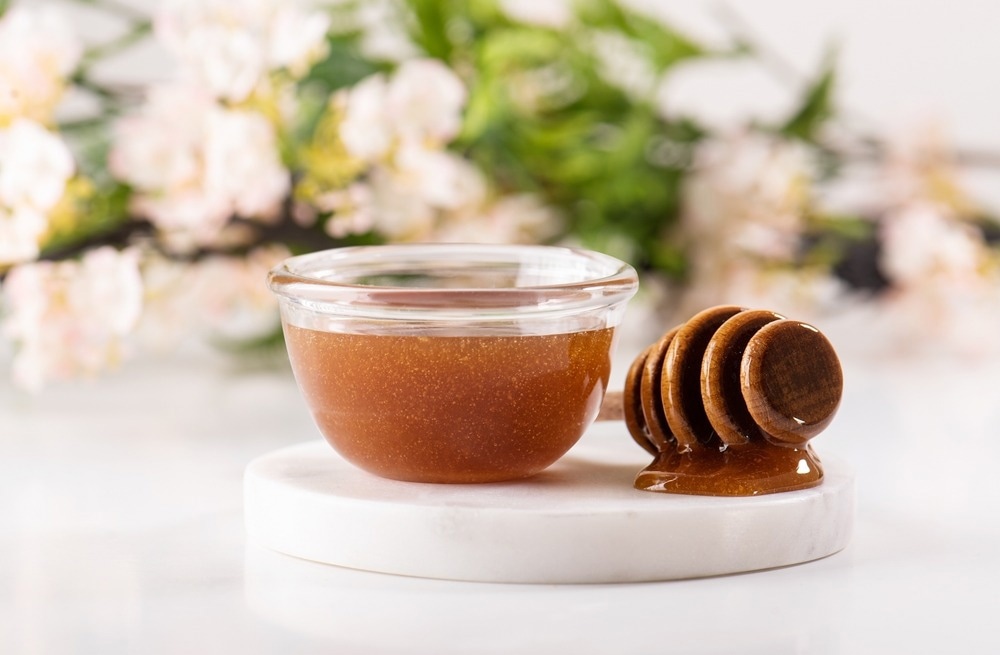The limitations of traditional wound care
The power of bioactive dressings
Choosing the right bioactive dressing
The future of wound care
References
Further reading
The limitations of traditional wound care
After an injury has occurred, a complex cascade of biological processes is initiated to support the repair and regeneration of lost or damaged tissue. Some of the different biological molecules involved in this natural healing process include those of the extracellular matrix, platelets, inflammatory cells, growth factors, cytokines, and chemokines.
Various wound care products have been developed and deployed for clinical use to support this healing process, reduce the appearance of scars, and improve the properties of the newly developed skin. Traditional therapies, which have been primarily used by rural populations, may include herbal and animal-derived compounds, living organisms, silver, and traditional dressings.1
Traditional wound care methods are often affordable and capable of treating a wide range of wounds, such as ulcers, burns, and infected wounds. Furthermore, many traditional wound healing methods can be combined with modern methods, biomaterials, and drugs.
Despite their widespread use, traditional wound care methods are associated with numerous limitations, emphasizing the need to develop more effective wound healing treatments.

Image Credit: Estonia Photography/Shutterstock.com
Traditional dressings like gauze, cotton wool, and natural or synthetic bandages, for example, can dry out the wound bed, thereby increasing the risk of trauma and cell death and inhibiting the wound healing process.
The power of bioactive dressings
Bioactive dressings include those derived from natural or synthetic materials that can directly or indirectly support the wound-healing process. Some of the key advantages associated with bioactive dressings include their permeability to oxygen, biodegradability and biocompatibility, antioxidant properties, maintenance of a moist wound environment, and pH regulation, all of which are factors that promote wound healing and skin restoration.
Additional aspects of bioactive dressings that must be met to support wound healing include the ability to maintain consistent heat to the injury to stimulate blood circulation while also preventing the ability of infectious pathogens from proliferating within the wound. Wound dressings must also be non-adhesive and easily removable, sterile, non-toxic, and allergy-free.
Explore the Tools Behind Innovations Like Bioactive Dressings
Choosing the right bioactive dressing
In general, bioactive dressings can be further classified as bioactive or drug-loaded wound dressings. Notable examples of bioactive dressings include honey, hyaluronic acid, collagen, alginate, chitin, chitosan, and polymers enriched with polyhexamethylene biguanide (PHMB). Comparatively, drug-loaded bioactive wound dressings may consist of silver, iodopovidone, ozonides, mesoglycan, DNA, ribosomes, rigenase, and matrix metalloproteinase (MMP) inhibitors.2
The selection of a bioactive dressing is often based on the severity of the wound. For example, hyaluronic acid dressings can be used to treat acute and chronic cleansed wounds with low-to-medium exudate, along with secondary dressings. Comparatively, honey-based dressings can be used to treat wounds with active bacterial colonization, particularly those infected with bacteria that are resistant to conventional antibiotic treatment.
 Medical-grade honey, such as Manuka honey, is particularly effective in fighting resistant bacteria and stimulating the healing process. Image Credit: Thasneem/Shutterstock.com
Medical-grade honey, such as Manuka honey, is particularly effective in fighting resistant bacteria and stimulating the healing process. Image Credit: Thasneem/Shutterstock.com
Chitin, which is a polymer derived from the exoskeleton of crustaceans, exhibits antimicrobial activity that has been shown to support the wound healing process in dressings effectively. Chitosan, another biomaterial derived from the exoskeletons of crustaceans, also provides analgesic benefits when used as a dressing for burns, skin abrasions, cutaneous ulcers, and grafted areas.2
Notably, bioactive dressings can take various forms depending on the source material, including hydrogels, films, nanofibers, and wafers. For example, alginate hydrogels can enhance antibacterial activity and promote cell proliferation. In contrast, alginate films, which are also highly effective antibiotics, have been shown to support re-epithelialization processes.
The future of wound care
Recent advances in bioactive dressings have revolutionized wound healing by targeting specific aspects of this process. Temperature, for example, is dependent upon various enzymatic and biochemical reactions at the injury site and is crucial for the wound healing process. In fact, any increase or decrease in temperature by 2.2 °C can deteriorate the injured area, thereby interfering with the wound healing process and increasing the risk of adverse effects like infection.
In an effort to overcome this challenge, researchers have incorporated temperature sensors such as thermistors, infrared sensors, and resistance temperature sensors to monitor wound status.3 Likewise, numerous pressure sensors like piezoresistive capacitive, triboelectric, and piezoelectric sensors have also been developed for wound monitoring.
Drug-delivery polymer dressings have also been developed to facilitate the sustained release of drugs directly to the injured site. Hydrogels, which are three-dimensional (3D) networks consisting of hydrophilic polymer bonds, have been extensively used for drug release dressings.
Various synthetic biomaterials have also been developed and incorporated into wound healing dressings, as well as suture material, coils for aneurysms, and drug delivery and growth factor (GF) delivery systems.4 For wound care, several studies have demonstrated that these biomaterials support wound generation in vivo.
For example, poly-lactic acid (PLA) nanosheet dressing led to more rapid skin regeneration while also facilitating the formation of a transparent collagen layer that may further promote wound-healing processes. In addition to PLA, poly-gamma glutamic acid (PGA), a biodegradable polymer, has also been explored as a synthetic biomaterial for wound care.
References
- Pereira, R. F., & Bartolo, P. J. (2016). Traditional Therapies for Skin Wound healing. Advances in Wound Care 5(5); 208-229. doi:10.1089/wound.2013.0506.
- Polverino, G., Russo, F., & D’Andrea, F. (2024). Bioactive Dressing: A New Algorithm in Wound Healing. Journal of Clinical Medicine 13(9); 2488. doi:10.3390/jcm13092488.
- Raju, N. R., Silina, E., Stupin, V., et al. (2022). Multifunctional and Smart Wound Dressings – A Review on Recent Research Advancements in Skin Regenerative Medicine. Pharmaceutics 14(8); 1574. doi:10.3390/pharmaceutics14081574.
Downer, M., Berry, C. E., Parker, J. B., et al. (2023). Current Biomaterials for Wound Healing. Bioengineering 10(12); 1378. doi:10.3390/bioengineering10121378.
Further Reading
Last Updated: Dec 13, 2024